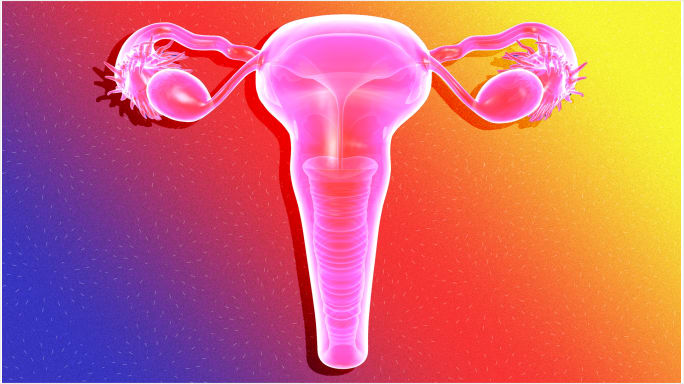My to-do list a few weeks ago read as follows: 1) Buy almond milk 2) Mail off birthday card 3) Meditate on cervix at 9am.
I first learned about meditating on my cervix from Kate Orson, an author and administrator of the Facebook Group, “Healing From LEEP/LLETZ,” which has almost 500 members. She advocates for the practice and urges women who have undergone LEEPs to join a webinar or begin taking courses to seriously heal and awaken the nerve pathways in the cervix. Many women (although it’s on a grassroots level) are experiencing serious side effects from LEEPs, which is a procedure that removes cells from the cervix that doctors feel could turn cancerous. There is a pushback to the procedure as the so-called “abnormal” cells can actually heal themselves and cutting into the cervix and severing nerves is not an end-all solution for patients. However, the LEEP procedure is performed every day, and women are misinformed of any critical side effects (loss of orgasm, chronic pelvic pain, depression, anxiety, loss of creativity).
Olivia Bryant, founder of Self:Cervix, started the movement after trauma caused her to tense her muscles in her pelvis as a response. She realized, after a tantric workshop, that she had a completely numb cervix. Now, for many people, the cervix is a mystery. It’s something in our bodies, but we have no idea what it does or how it contributes to our sexual life. In fact, the cervix has three nerves that connect to the brain which is why when a LEEP is preformed, these nerves are in danger of being detached. The vagus nerve goes from the cervix all the way into the brain, it moves upwards. Most medical images do not even reveal this cervix to brain connection which was discovered recently in 2012. Since the vagus nerve is an intelligent nerve, meaning that it regulates our nervous system, keeps us balances, and protects us, it’s a very crucial part of our anatomy.
Furthermore, cervical orgasms are a powerful place of pleasure. It’s a donut shaped area that gets hard when we aren’t turned on, and turns soft when we are turned on during sexual experiences. It reacts and contributes to how we enjoy sex. Discovering, pleasuring, and understanding the cervix is a feminist act.
Olivia works with 1,500 people who are “interested in healing, learning and exploring the powerful and magical gateway of the cervix.”
During my webinar earlier this month, Olivia joined us on a live stream where she began by walking us through the importance of the cervix. Her calm encouraging voice said that the cervix is “generally the most traumatized area of a woman’s body,” which is something that resonated with me as I’ve felt largely alone in my experiences with biopsies and LEEPs over the past several years. She says, “There is no other part, in the western world, that is cut, lasered, and burned, and removed, rammed into” more than the most pleasurable orgasmic organ in our body: the cervix.
During the webinar, Olivia explained the five acts of love which contribute to the cervical awakening. Self:Cervix doesn’t just focus on women, like me, who have had a LEEP. It’s any type of trauma. It could be childbirth, abuse, or being physically tense. Olivia explains that women carry trauma in their cervix and it takes time and commitment to shift this. Why is trauma stored in the cervix? Olivia explains that like fight, flight, or freeze, we go to run but we cannot. Therefore, the trauma remains in our body and it becomes painful. She says that a visit to the doctor, for example a Pap test, may not seem traumatic but it is. It’s someone invading your space, it’s a micro trauma on the cervix. Painful intercourse is another trauma in which the body tries to fight back. As a result, the cervix hardens, the ligaments contract, and time and time again, the cervix learns that sex equates to pain.
Olivia explains that key micro traumas influence:
- shame
- unexpressed emotion
How can you meditate on your cervix?
Olivia suggests focusing on the vagus nerve.
- yogic practices, especially pelvic floor positions.
- breathing exercises which include deep meditation on the pain, focus on where your pain is coming from.
- pelvic massages
The webinar was packed full of information—perfect for me to nerd out later—but I’m still practicing meditation on my cervix. As Olivia explains, it takes time. Healing from any trauma is time-intensive.
Self:Cervix offers several courses: Initiation, Release, Rapture. Touching, abdominal massages, trauma healing, consent, and empowerment are all a part of the next course which begins on May 21st and goes until June 19th. The program aims to encourage people to reclaim their power, to remain safe, and to recover.
Olivia writes, “‘Self:Cervix-ing’ is a radical act of self love. You have to show up for yourself and you have to go deep into a place that has also largely been ignored or mistreated.”
IMAGE COURTESY OF GETTYIMAGES




comments